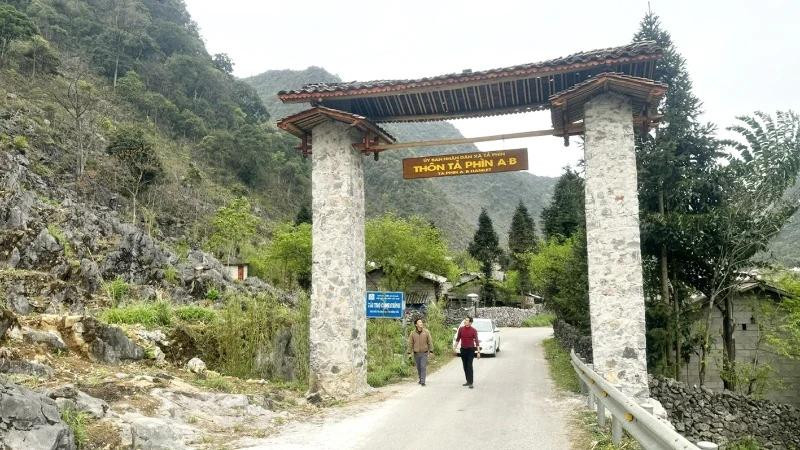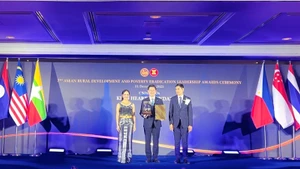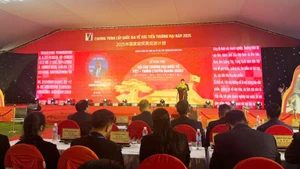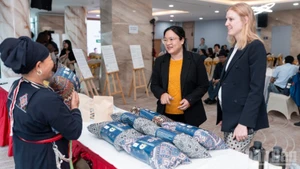Dong Van District has 225 villages across 19 communes and towns. Each village in the Dong Van Karst Plateau (Ha Giang) has unique terrain, natural landscapes, and a rich traditional culture of ethnic minority groups.
Chi Lu Thi Van, from Lo Lo Chai Village, Lung Cu Commune, Dong Van District, earns hundreds of millions of VND annually from the Cuc Bac Cafe and provides lodging services.
Therefore, most villages in the highlands of Dong Van can become destinations for domestic and international tourists. Some cultural villages are widely known, such as Lung Cam Cultural Village in Sung La Commune, Lo Lo Chai Cultural Village in Lung Cu Commune, and Thien Huong Ancient Village in Dong Van Town.
In addition, some emerging highland villages attract tourists for sightseeing and experiences. Notably, Sao Ha Village in Van Chai Commune is an isolated village surrounded by vast cat-ear rock mountains. Similarly, Lao Xa Village in Sung La Commune, a remote village with pristine landscapes and traditional ancient houses, has become a favourite spot for visitors.
One challenge for tourists who want to explore highland villages in Dong Van, especially those with underdeveloped tourism, is identifying the boundaries and locations of these villages. The reason is that most villages are far from the commune centres, lack directional signs, and have dispersed populations.
Recognising this issue, in mid-2024, Dong Van District launched a movement to socialise the construction of village entrance gates. This initiative is not mandatory but is based on the principle of "People discuss, people contribute, people build."
After the initiative was launched, residents of 19 communes and towns in Dong Van District actively participated, contributing money and labour to build village entrance gates. Village leaders met with residents to select traditional gate designs provided by the district’s Infrastructure and Economic Office, estimate construction costs, and mobilise contributions from the community.
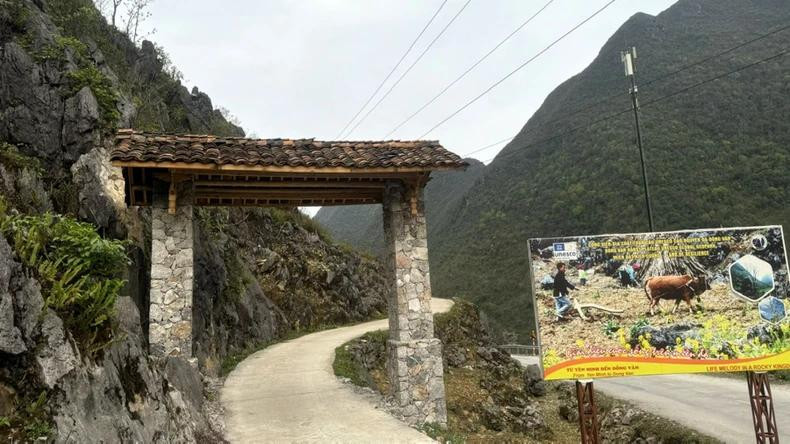 |
| The construction of village gates in Dong Van District is funded and built by the local people. |
The money contributed by residents is mainly used to purchase materials, while the construction work is carried out by skilled local builders.
Thanks to the enthusiastic participation of the people, all 225 villages in the highlands of Ha Giang have now completed their village gates through socialised funding, with an average cost of at least 20 million VND per gate.
Beyond village gates, Dong Van District has also encouraged communes and towns to mobilise socialised funding from organisations and individuals to build entrance gates for communes and town centres.
The village gates in the highlands of Dong Van not only help tourists identify locations and facilitate their visits but also serve as a source of pride and a symbol of the traditional culture of local people. Some beautifully constructed village gates have even become popular check-in spots for visitors.
